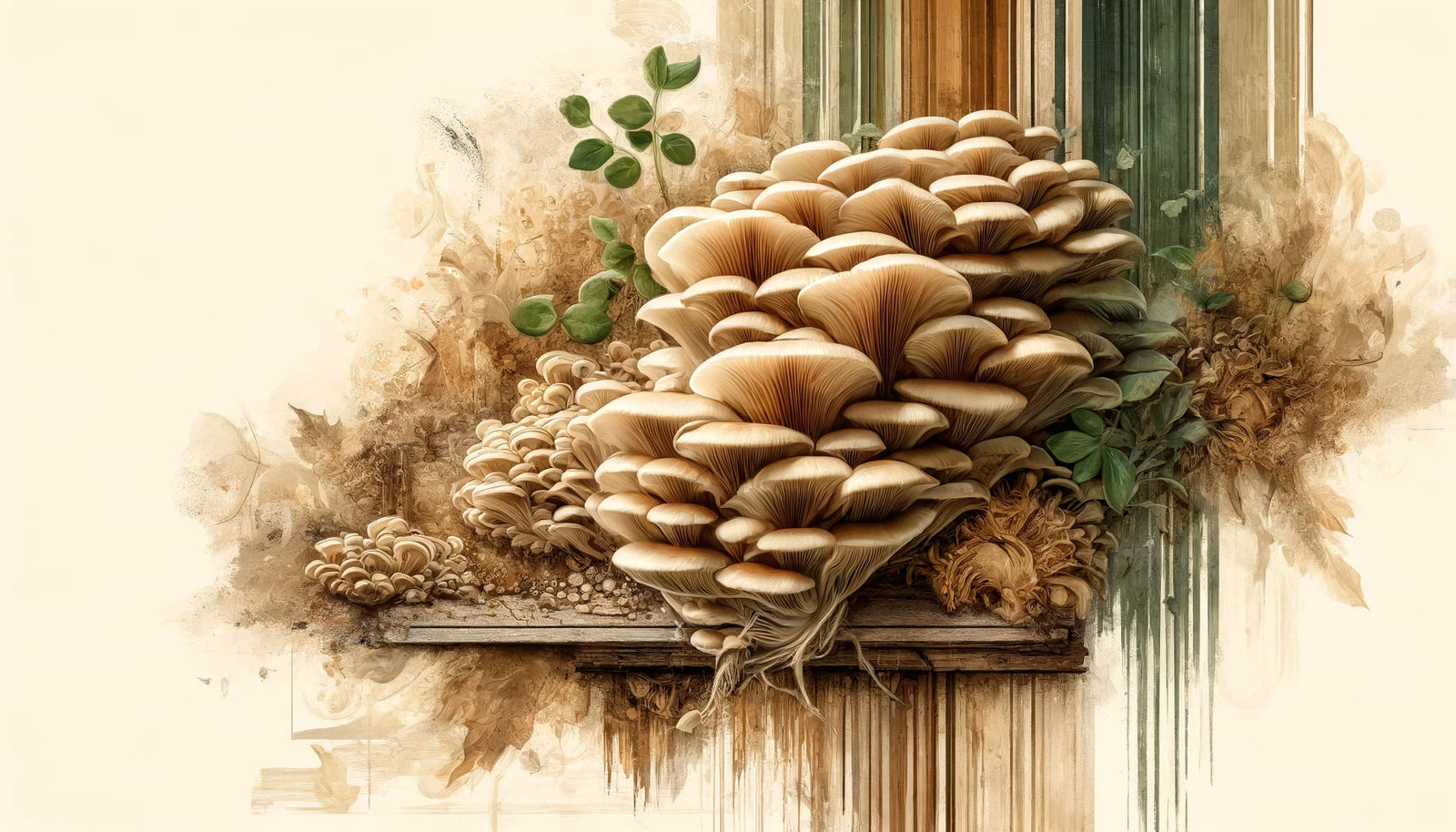Embarking on the journey of growing your own gourmet mushrooms is not only rewarding but also surprisingly accessible, especially with the right tools and techniques at your disposal. In this beginner's guide, we'll explore the essentials of mushroom cultivation, focusing on simple yet effective methods using the At Home Grow Kit from R&R Cultivation. Whether you're an aspiring mycologist or a curious home gardener, get ready to dive into the fascinating world of mushroom cultivation.
Choosing Your Gourmet Mushroom Varieties
For beginners venturing into the world of mushroom cultivation, certain gourmet varieties offer a more forgiving experience, making them ideal choices for those new to the process. Oyster mushrooms are renowned for their resilience and adaptability, thriving in a wide range of environmental conditions. Their rapid growth and ability to colonize various substrates make them a popular choice for novice growers. Similarly, Lion's Mane mushrooms are relatively low-maintenance and can be cultivated on different types of substrates, including sawdust, straw, and coffee grounds. With their unique appearance and health benefits, Lion's Mane mushrooms provide an exciting opportunity for beginners to explore.
The cultivation techniques for gourmet mushrooms vary depending on the species and their natural habitat. While some mushrooms, like Shiitake, prefer to grow on logs or wooden substrates, others thrive on different types of substrates, including sawdust, straw, and compost. For example, Shiitake mushrooms are traditionally grown on hardwood logs, where they can establish symbiotic relationships with the wood and develop their distinctive flavor profiles. On the other hand, species like Oyster mushrooms are versatile and can be cultivated on a variety of substrates. Understanding the specific requirements of each mushroom variety is key to successful cultivation, allowing growers to tailor their approach to suit the needs of their chosen species.
Choosing the Right Products
Before diving into the cultivation process, it's essential to choose the right products tailored to your needs and experience level. Our company offers a range of options, including at-home grow kits, inoculated spawn, all-in-one grow bags, organic sterilized grain, and sterilized wood substrate. Each product serves a specific purpose and can be used in various stages of the cultivation process.
Our at-home grow kits offer a convenient and user-friendly solution for those looking to start their mushroom cultivation adventure with ease. These kits come complete with everything you need to get started, including pre-inoculated substrate and simple-to-follow instructions.
For more experienced growers who prefer a hands-on approach, our inoculated spawn provides the perfect foundation for cultivating mushrooms on a larger scale. This sterile and ready-to-use spawn can be used to inoculate various substrates, allowing for greater flexibility in the cultivation process. Alternatively, our all-in-one grow bags offer a hassle-free option for growers who have their own spores and are seeking convenience and efficiency. These bags come pre-filled with sterilized substrate and are equipped with injection ports for easy inoculation.
For those interested in customizing their growing substrate, our organic sterilized grain and sterilized wood substrate options provide the flexibility to create tailored growing environments for specific mushroom species. These premium-quality substrates undergo rigorous sterilization processes to ensure optimal conditions for successful mushroom cultivation.
Setting Up Your Cultivation Space
Creating the ideal environment for mushroom growth is crucial for success. Find a clean and well-ventilated space free from drafts and direct sunlight, as these factors can adversely affect mushroom development. Ensure that the temperature remains consistent, ideally between 65°F to 75°F, as most mushroom varieties thrive in these conditions. Maintaining proper humidity levels, typically around 90%, is essential for promoting healthy mycelium growth and preventing drying out. Consider using a humidifier or misting system to achieve and maintain optimal humidity levels in your growing space.
Depending on the product you've chosen, prepare the appropriate growing containers or bags, making sure they are clean and sterilized to prevent contamination. Additionally, be diligent about sanitation practices throughout the cultivation process to minimize the risk of contamination and maximize your chances of a successful harvest.
Inoculation and Colonization
Once you have your growing containers or bags ready, it's time to inoculate them with mushroom spawn. If you're using inoculated spawn or an all-in-one grow bag, simply inject the spawn into the substrate according to the provided instructions. For those using organic sterilized grain or sterilized wood substrate, mix the spawn thoroughly into the substrate material. Allow the inoculated containers to colonize in a dark, warm environment for several weeks until fully colonized.
Fruiting and Harvesting
After the substrate has been fully colonized by the mycelium, it's time to initiate the fruiting stage. Depending on the mushroom variety, this may involve exposing the colonized substrate to specific environmental conditions such as light, humidity, and airflow. With proper care and maintenance, you'll soon start to see the formation of mushroom pins, signaling the beginning of the fruiting process. Harvest the mature mushrooms as they reach the desired size, using a sharp knife to cut them at the base of the stem.
Many mushroom varieties are known for their ability to produce multiple fruitings, allowing growers to harvest them over an extended period. After the initial harvest, these mushrooms can go through subsequent flushes, where new mushrooms emerge from the same substrate or growing medium. With proper care and maintenance, these mushrooms can continue to produce fruitings for several weeks or even months, providing a consistent supply for culinary use. Harvesting the mushrooms as they mature encourages the development of new fruiting bodies and promotes overall growth, ensuring a steady and abundant supply of fresh mushrooms for consumption.
Get Started With Homegrown Mushrooms
Growing your own gourmet mushrooms mixes can be a fulfilling and enjoyable experience, especially when equipped with the right tools and knowledge. With products from R&R Cultivation, even beginners can embark on their mushroom cultivation journey with confidence. From inoculation to harvest, each step of the process offers valuable insights and opportunities for experimentation. So why wait? Start cultivating your own delicious mushrooms today and discover the joy of homegrown goodness!

